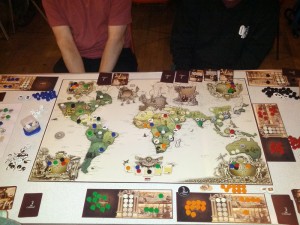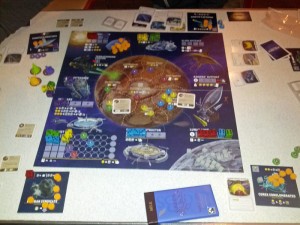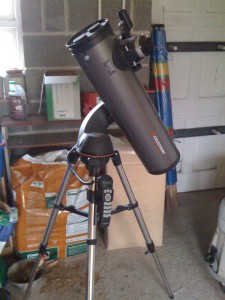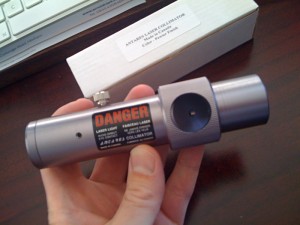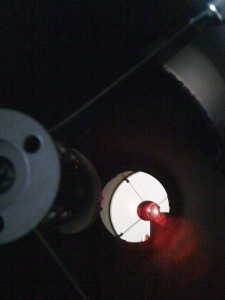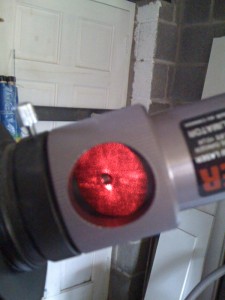It’s a constant source of annoyance to Mrs Shep that I’m not, usually, the kind of person who really feels the cold. A drop of a single degree on our living room’s thermostat will send her huddling under a blanket and complaining about how cold the weather is turning … while I’ll normally still be flopping around the house in T-Shirt and jeans, and not really noticing any difference. Maybe it’s down to my ancestral genes; maybe it got cold at night, out on the bleak Yorkshire moors…
But…
Last night’s gaming session was a touch on the cool side.
Some might say: “nithering”.
Brass monkeys.
Or, more bluntly: Really ****ing cold.
The heating in the church hall where we meet has been out of action for the last few sessions. Up until last night — thanks, I guess, to the dog days of an indian-ish summer — it hasn’t been too much of a problem. Admittedly, at the previous meeting, a few people seemed reluctant to take their coats off, and there was a bit of a nip in the air… but it wasn’t too bad. This time, I thought I’d better take along a jumper, just in case things had got any worse. I’m glad I did; the temperature was awful… and I’m not exaggerating when I say that some people were playing dressed in winter coats, scarves, and wooly hats!!!
Nevertheless, we gritted our teeth and made good of the situation; after all, there was gaming to be done!
Le Havre
A 4-player game against Michael, Olly and Owain. Owain was familiar with the iPad version, Olly had read the instruction book on a previous occasion (but hadn’t actually played), and Michael was completely new to the game. Fortunately, Le Havre is a pretty easy game to explain. The tricky bit comes in figuring out the interplay/dependancies between the various buildings, but I think that — between the two of us — Owain and myself flagged up all the particularly important ones well in advance of them entering the game, so everything flowed well.
This is only the second time that I’ve played Le Havre with 4 people at the table, and I think that’s already enough times to convince me that the commonly-held view that its sweet-spot is 3 players is pretty much correct. It’s not a bad game for 4 by any measure… but you just don’t have the same amount of “wriggle room” each round as you do with fewer players. In the 3 player game, you always get at least 2 turns per round, and sometimes 3. In the 4 player game, you usually get 2 turns per round, but sometimes only one. This makes a huge difference; it seems like you spend most of the 4 player game concentrating on meeting the round’s food requirements, and comparatively little time investing in point-scoring production chains (which is where a lot of the fun in the game lies!). Still, a 4th player at the table makes the game that little bit more social, and it’s still a fun experience.
We just used the basic “special buildings” cards this time… the last time I played with first-timers, I used cards from Le Grand Hammeau, and we managed to draw 5 of the most oblique, complicated, and least-straight forward cards in the whole deck. The mix in this game was far better, and way more representative of how the game normally works; there was the Fish Pond (gives you fish and wood), Clothing Industry (converts hides and leather into money), Hunting Lodge (Gives you hides, meat, and a +2 fishing bonus), Coal Trader (trade food for coal and charcoal), and the Luxury Yacht (allows one person to upgrade an iron ship into a functionally-useless-but-high-victory-point-scoring Luxury Yacht).
The other quirk of this particular game was the relatively-late entry of the clay mound… which stifled early-game building, as the clay offer space was the only source of clay in the game for far longer than it usually is. Still, it’s glitches like this — which come about via the fiendishly-elegant card-stacking mechanism used during set-up — which help keep Le Havre fresh, and prevent you from falling into predictable opening tactics.
In the final reckoning, myself and Olly were only a couple of points apart — (I think Olly beat me by 2 francs?) — and I was convinced one of us had the game in the bag, until Michael … who was so saddled with so many loans throughout the game that we’d pretty much ruled him out as a dangerous contender … announced that he had an outrageously high score despite the debt penalties, and beat the pair of us. Grabbing a Luxury Liner late in the game had probably been his winning stroke. Must watch out for debt-riding luxury-liner owners next time! 😉
Good game — took us about 3 and a half hours to play — though I have to admit (at risk of sounding like a bit of a girl) that my enjoyment of this particular session was perhaps hampered a little by the physical discomfort of the room temperature 🙁
Archaeology (The Card Game)
Next up was a quick filler round of Archaeology, while we waited for some of the other games in the room to finish up. It was a really odd session — all of the thieves popped up in the first few rounds of the game (and, by a similarly-unlikely fluke, nearly always managed to grab a Pharaoh’s mask from their unsuspecting victim), and I had an appallingly bad draw of cards… I only managed to collect one complete set of low-value treasure (for 15 points) and cash in an extra 3 points of junk at the end of the game. My worst Archaeology score ever!
The Pillars of the Earth
I’ve been keen to give this one another try for quite a while now (actually, according to this blog, it’s nearly a year since I played it — eek!) … and — after last meeting’s attempt to get a game was aborted when the game of Colonial that I was involved with ran longer than expected — I was pleased to hear that John F had brought his copy in again and was happy to give it another airing.
My previous exposure to the game had been via the expanded version, with 6 players, which I really enjoyed. I wasn’t sure how well the “base” version would play by comparison, since it gives you significantly fewer actions to choose from each turn… but I was really impressed; the core game feels “just right” — not too much, not too little… in fact, I could imagine preferring its elegance in some ways to the expanded game, were it not for the fact that it’ll only seat 4 players.
I’d forgotten how swiftly the worker placement part of the game goes — a situation exacerbated by the fact that there was only three of us playing — and it wasn’t a very chatty session; a lot of the moves were made in silence. More than once I’d find myself studying my cards, or fathoming out what to do when my turn came around, and then I’d glance up and realise John and Dave were looking at me expectantly, and it was already my turn to do something again (sorry guys!!)
The game was a tie between me and Dave… I won the tie-breaker by having the most gold, but it wasn’t a particularly satisfying victory — I hadn’t played a particularly strong game, and mostly just pulled the fat out of the fire in the very last round by grabbing the goldsmith card (which lets you convert money to victory points), liquidating pretty much every resource I owned via the marketplace, and using the resulting gold to catch up with Dave. (Also, I know Dave dropped the ball half way through the game and failed to use a special ability that would’ve netted him another couple of points). Still, a win is a win.
Being able to turn around a whole game entirely on the flip of a final-round card is the kind of thing that would normally put me off a game … though there were many opportunities for my opponents to block my access to that particular action (since I was almost out of money), and Pillars of The Earth does so much else *just* right that it’s hard not to love it on balance. So I’ll forgive it its sins. This time.
The game ended at 11:30, and I decided to call it a night and head off home (before advanced hypothermia had chance to set in…)
Best bit: Le Havre. It might have eaten up most of my evening, and might have seriously impacted what else I’d manage to fit in during the night… but I knew that was going to be a risk the moment I packed it into my game bag ;). Time seems to fly past when I play this one; I’m always slightly surprised to discover it’s taken 3 or 4 hours. I only wish we’d been playing it in a slightly comfier environment!
Worst bit: Heating failure. (Surprise!). I hope we had no first-timers at last night’s session; if that had been my first time, It wouldn’t have made a very good impression 🙁
Further woe: I won’t be back at the club for almost a month, due to a family gathering on the 10th (sadface!) … a situation made even worse by the fact that I heard a rumour that Olly will have the 5th Anniversary edition of Galaxy Trucker in his possession by then (double-sadface!). Hope you guys don’t have too much fun without me.
CREDITS:
Pictures courtesy of Owain, Olly and John F. Newcastle Gamers meets on the second and last Saturday of the month. Usual cost is £3 (or £1 for concessions), but your first visit is free … check our G+ group for more info.

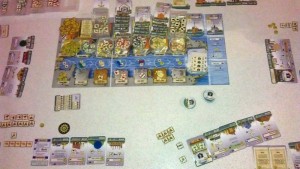
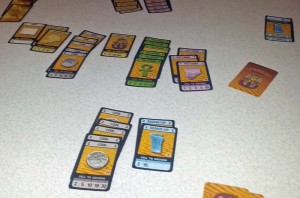
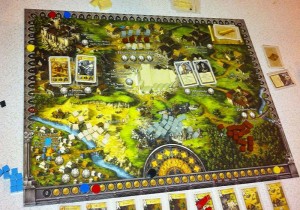
 Follow
Follow



